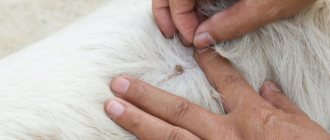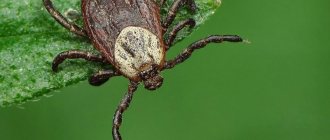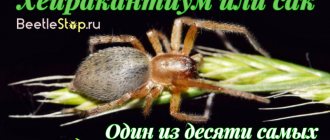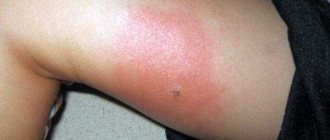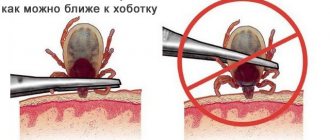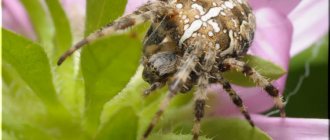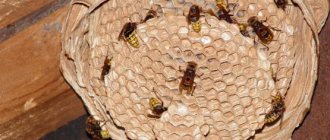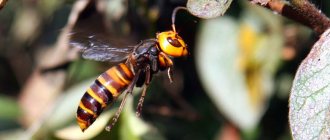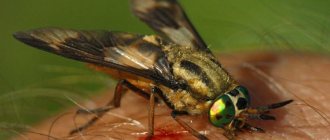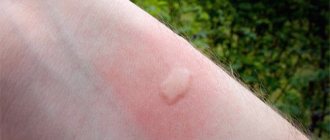This species belongs to araneomorphic spiders belonging to the orb-weaving family. More than 1,500 species are known throughout the world, about 30 of which are found in the natural landscapes of the CIS. These are small predatory animals. The victims are killed by poison.
In the article, the reader will learn whether a cross spider bite is dangerous, what to do if poison gets in, and what measures should be taken to protect yourself from an attack.
Spider cross
Help with a spider bite: what should be in the first aid kit
If a person is bitten by a spider, regardless of the type of arthropod, the wound must be treated with an antiseptic : alcohol, hydrogen peroxide or a non-concentrated solution of potassium permanganate.
If you don't know what to do if you get a spider bite because you don't know its name, take an antihistamine . The drug will help to avoid unpredictable consequences from an allergic reaction and must be present even in a minimal tourist’s first aid kit. As an example:
- cetirizine;
- diazolin;
- suprastin.
If a non-venomous spider bite occurs, treatment may be limited to eliminating local inflammation with ointments:
- prednisolone;
- kremgen.
What you need to know about the cross
The natural habitat of spiders is bushes, low trees, and grass. Large concentrations of them are found on coasts and wet forests.
In urban areas they can be found on verandas, in buildings, country houses, sheds, garages and any abandoned buildings. Individuals prefer to place their hunting webs in the crowns of trees, while they themselves hide in the foliage.
The crossbill is easy to identify by specific spots on its abdomen (see photo above). They are arranged in such a way that a pattern resembling a cross emerges, which is why the species has this name.
The common cross spider has a yellow-brown color; in some individuals it may have some differences, which is due to the characteristics of the place of residence, for example, black-brown color. Another characteristic feature is the presence of patterns in the form of brown rings on the legs.
Note. Crosses are very eco-plastic, so their colors can be different, which allows them to be camouflaged in their permanent locations.
These animals, like all representatives of this class of arthropods, are predators. Insects caught in the web are killed by toxic substances that are injected into their body using chelicerae - modified jaws.
Most often, the victims are flies and midges, but sometimes Hymenoptera can also be caught. If the insect is strong enough to break the web, then it survives, otherwise it becomes the spider's supper or lunch.
Venom injected into a fly dissolves its tissues, turning the internal organs into a gel-like consistency. A hungry individual sucks everything out of the victim’s body and then throws it out of the web.
Interesting. The strength of spider web thread is the same as the strength of steel wire (of the same diameter).
Symptoms of a spider bite
A spider bite can be distinguished from a harmless insect bite or shallow scratch by the following symptoms:
- (a couple of centimeters in diameter) with a pink or red border forms at the injection site
- already 15 minutes after a person is bitten by a spider, the first symptoms appear, which rapidly intensify:
- a feeling of pain and aches in the muscles throughout the body; - the victim sweats a lot, the face turns red and swells .
A bit of Wikipedia
Common cross spider
There are more than 600 species of cross spiders in the world fauna. About 30 species are found on the territory of Russia and post-Soviet countries. All of them have characteristic white or yellowish spots on their backs, from which a cross pattern is formed, which is why they are called “crosses.”
The cross spider is considered a small spider. Although quite large specimens can rarely be found, especially in places remote from civilization. Here are a few photos of cross spiders that are found in our latitudes.
When meeting a person or animal that is clearly larger than its size, crosses hide and are never the first to attack . Their food is small insects, mainly flies. They do not show aggression towards others.
First aid for a spider bite
What to do if you are bitten by a spider whose species is unknown? First, the bite site is washed with soapy water and treated with antiseptic agents. First aid for a spider bite involves immobilizing the bitten limb to slow the spread of the venom.
A thick bandage is applied above the place where the spider bit. It should not interfere with blood flow. If possible, apply a cold compress of ice, a chilled bottle or metal to the affected area.
Mandatory assistance for a spider bite also includes active watering of the victim . A large amount of liquid promotes the rapid elimination of toxins. To avoid allergic shock, antihistamines are given .
Even if you are confident in what to do if you are bitten by a spider, this does not diminish the possible risk to the life of the victim. First aid for a spider bite is aimed at inhibiting intoxication of the body before the person is taken to the nearest medical center .
How are cross spiders useful?
Spiders are very important to our ecosystem because they eat harmful pests such as mosquitoes, flies, ants and even ticks, helping to reduce pest populations.
There is evidence that people can use pure spider webs on a cut or wound to stop bleeding. In homeopathy there is a preparation from the spider's cross. To prepare it, the entire spider is used, killed with 90% wine alcohol.
The preparation from the cross spider is called Aranea diadema c. Homeopaths use this remedy to treat bleeding, malaria, facial neuralgia, intercostal neuralgia, intermittent fever and some other conditions.
What to do if you are bitten by a spider, depending on its type
The bite of the brown recluse spider is dangerous because it is not felt during the first hours. Lumps or one large tumor form on the affected area, and the skin is very itchy. If medical care is not provided in the first two days, then rapid death of living tissue occurs.
It is forbidden to expose the recluse spider bite to high temperatures or try to suck out the venom. First aid for a spider bite is provided according to the standard procedure. Any physical activity is contraindicated. If the situation allows, the bite site is placed above the level of the heart.
The bite of the yellow sak spider manifests itself more quickly than in the case of the recluse spider. The injection site also needs to be cooled, the person given pain relief if necessary, and taken to a medical facility as soon as possible. It is forbidden to cut the bite of a yellow spider in an attempt to remove the poison yourself.
Despite the repulsive appearance that the arthropod has, the bite of the phalanx spider is not fatal to humans. The main thing is to quickly wash the wound and disinfect it. The affected area will be very painful and there will be redness. The phalanx spider bite is covered with a sterile bandage, which is changed every day.
How to avoid a spider bite
To avoid being bitten by a cross spider, it is enough not to touch it. But even if you try to catch him, he will try to run away and hide. Therefore, the first and most important rule: do not try to catch a spider!
The rest of the rules are standard:
- When walking through the forest, or even in the garden near the house, be careful about cobwebs, as a spider can accidentally get under your clothes and bite, assessing the situation as aggression.
- In old abandoned houses, basements, cellars and other similar buildings, you should also be careful.
- If you are relaxing outdoors with a tent, then you should always close it and check it for the presence of a cross in the evening before going to bed.
By the way, this rule applies to all types of animals and insects. An open tent can attract the attention of both snakes and small rodents.
What to do if you are bitten by a black widow spider
Attention! First aid for a karakurt spider bite is most effective in the first moments after the incident. If no more than two minutes have passed after a person was bitten by a spider , cauterization is performed . If this time has been missed, this cannot be done.
Cauterization is performed using three matches, which are put together, set on fire and applied to the bite, or two matches are applied to the bite site and the third is set on fire. You can also burn the bite with a cigarette. The protein structure of the poison, located under the skin, is destroyed by heat.
Knowing what to do when bitten by a karakurt spider is extremely important, since first aid in this case plays a decisive role in the fight for a person’s life. Hot drinks are given in small quantities; in the presence of severe pain, an anesthetic is injected (1 ml of diphenhydramine and 2 ml of analgin).
Over the past month, 15 people were taken to the Volgograd Regional Narcological Hospital with karakurt bites. Six victims were admitted to intensive care. The head of the intensive care unit of the Volgograd Regional Hospital, Konstantin Parfenov, spoke about this.
He also clarified that as of today, 14 people have already been discharged; one man, admitted on Wednesday, July 8, remains in the hospital. Most of the applicants are residents of the southern regions of the region who live in private houses.
Karakurt is a poisonous spider, better known as a black widow. The bite of this arthropod can be very dangerous, as it can cause death from respiratory paralysis. Its venom is 15 times stronger than that of a rattlesnake. The Kurakurt black widow is very prolific, and periodically (every 10-12 or 25 years) outbreaks of its mass reproduction are observed.
According to experts, the increase in the number of victims compared to last year is due to the fact that the habitat of black widows has moved north due to rising temperatures. The main habitats of karakurts are landfills, abandoned wastelands, garbage, and dead wood. However, in July-August, during their migration period, these poisonous spiders can crawl into houses.
If a spider ends up on the body, in order to avoid a bite, doctors recommend not hitting or squeezing it, but shaking it off. If the spider does bite you, you should immediately contact the nearest medical facility.
Source: https://www.volgogradru.com/
Black widows are a genus of spiders known for their venomous properties. The genus includes 31 species of spiders. There are 13 species of black widows in the fauna of South and North America, 8 species live in Eurasia, 8 species in Africa, and 3 species in Australia and Oceania. One species can be found on all continents except Eurasia.
You can recognize a black widow by its paws of moderate length, which resemble a comb. The pair of hind legs have several strong, curved bristles. The comb allows you to throw a hunting web at victims, which can even be lizards, frogs and snakes.
Each species has its own color, but they are all united by black, shiny limbs, including the cephalothorax. The bellies of North American black widows are also completely black. One species has a red spot on its body, shaped like an hourglass. The bellies of European species may be spotted, like those of steppe widows, or with elongated white-brown spots.
How to Avoid a Black Widow Bite
Contact with a black widow can have serious health consequences, so you should familiarize yourself with some simple tips for preventing bites.
Firstly, be especially vigilant when walking through the forest, park, or while working in summer cottages, because the greatest danger can await a person in nature.
Secondly, do not sleep outdoors in areas where poisonous arthropods can be found.
Thirdly, when spending the night in a tent, place the sleeping places so that they do not come into contact with its internal walls.
Fourthly, when settling down for a rest, carefully inspect the area to make sure there are no black widows.
Fifthly, fill all holes and holes under stones with earth that may contain dangerous spiders.
Sixth, wear clothes with long legs and sleeves.
Seventh, before going to bed in nature, check the bedding into which a black widow might have crawled.
Eighth, use special curtains and tuck them under the bed.
Ninth, dig small ditches around the tents.
Tenth, do not walk on the ground barefoot.
What are the consequences of a black widow bite?
Black widow venom is neurotoxic. It has a yellow color and an oily consistency. The venom contains alpha-latrotoxin, which promotes the release of acetylcholine, norepinephrine and other mediators and the depletion of their reserves.
First, the poison spreads through the lymphatic vessels, then enters the circulatory system. It spreads through the blood throughout the body. Black widow venom causes a specific clinical syndrome called latrodectism.
The spider bite itself is not noticeable at first. It feels like a pin prick. After a while, two small red dots, slight erythema and swelling appear on the bitten area. Necrotic wounds do not develop.
Half an hour to an hour after the spider bite, painful muscle spasms begin to appear. They are first observed at the site of the bite, then spread to the large muscles of the limbs and torso.
After this, significant tension in the muscles of the anterior abdominal wall and severe pain appear, which resemble the symptoms of peritonitis. However, palpation of the abdomen is not painful. The last thing to tense is the facial muscles. It becomes sweaty, distorted by a grimace of pain. It shows signs of blepharoconjunctivitis and lacrimation.
In addition, the following symptoms may occur:
• drooling, • heavy sweating, • vomiting, • arterial hypertension, • tachycardia, • shortness of breath, • anxiety, • headaches, • body weakness, • fasciculations, • paresthesia, • hyperreflexia, • urinary incontinence.
Sometimes renal failure is recorded.
Painful sensations begin to subside during the first 12 hours. However, they may become stronger again over the next days and weeks.
Plus, there are side effects caused by the body’s allergic reaction to the poison.
What not to do if you are bitten by a black widow
You should not press a poisonous arthropod to your body or pick it up with your hands.
You should not cut the wound either crosswise or in a striped manner. Such actions will not only bring no benefit, but will also injure the victim even more.
It is not recommended to apply a tourniquet above or below the level of the bite.
You should not cauterize the wound with anything, since the effectiveness of this method has never been proven.
What measures can you take if you are bitten by a black widow?
A bite from this dangerous spider requires immediate medical attention. The most effective way to treat a bite is to inject a special serum. However, on the way to the hospital it is possible and even necessary to provide first aid to the victim.
1. Try to suck the poison out of the affected area for the first 5-10 minutes. For this purpose, you can use improvised means that can create a vacuum, or suck it out with your mouth. However, the latter option is allowed only with an ideally healthy oral cavity, in which there are no wounds, stomatitis, caries, gingivitis and other similar diseases. Otherwise, the poison may end up in the circulatory system. After sucking, rinse your mouth with water.
2. Immobilize the bitten limb and minimize movement of the victim.
3. Give the bitten person a hot drink in small doses, which will enhance the removal of poison from the body.
4. If chills, cold sensations, and muscle tension occur, warm the victim’s limbs.
5. Apply a cold compress to the bite site, which will reduce pain.
6. If necessary, use any pain reliever
Which doctors should you contact if you have a Black Widow Spider Bite:
• Traumatologist • Surgeon
Source - https://ukusili.net/
The Russian Ministry of Health has developed instructions for insect and snake bites
Rules of behavior in extreme situations
Video lessons on first aid
Lifestyle, behavior
Predators live alone, gathering in pairs for a very short time - during the mating season. The males crawl up to the female’s web and carefully move the threads. A hungry spider can easily eat a gentleman before he even begins courtship. If the chosen one remains in the center of the web, sits motionless, you can approach her.
On a note!
After mating, the female forms a cocoon and lays up to 500 eggs in it. It stays close to its shelter and protects it. After birth, the spiders crawl in different directions. The mating period occurs at the end of July, by the beginning of autumn the young generation appears. They overwinter in the forest floor, under bark, and tree hollows.
Crossbills feed on insects. Their trapping nets catch butterflies, flies, grasshoppers, crickets, wasps, bees, fruit flies, and mosquitoes. The spider pierces the chitinous cover, injects poison and saliva. The toxic substance causes muscle paralysis and immobilizes the victim. The mica turns the insides into a liquid mass, which the predator then drinks.
Characteristic
The cross spider, or crusader, got its name thanks to the spider, which, as can be seen in the photo, is formed from white spots. The abdomen of the arthropod is brown and teardrop-shaped. The cross has 8 legs, on which supersensitive olfactory organs are located. There are 8 eyes on the head, they are directed in different directions, which makes the view as wide as possible.
The male cross spider looks the same as the female. The only difference is the sizes. Thus, females are slightly larger than males and their sizes can range from 16 to 25 mm, the male’s body size is approximately 10-11 mm. Throughout their lives, these arthropods molt several times, and this happens at regular intervals.
Nutrition
Crosses are hunters who are most active at dusk and at night. During the day they prefer to hide in secluded places. Their diet contains:
- flies;
- butterflies;
- mosquitoes;
- vileness, etc.
During a hunt, the crusader spider positions itself in the center of its web and freezes. From the outside it may seem that he is dead. But as soon as the prey falls into the net, the hunter reacts with lightning speed. He quickly runs up to the confused insect, plunges his sharp claws, which are located on the front pair of legs, into its body and injects paralytic poison. After some time, the caught victim freezes. Moreover, in different situations, spiders either immediately eat their prey or leave it in reserve.
The cross spider eats quite a lot - the total volume of food consumed per day is approximately equal to its body weight. And at one time he is able to eat about a dozen insects. For this reason, he spends almost all his time hunting, constantly being in the web and waiting for the next victim. A small part of the day is allotted for rest, but even during this period the signal thread is necessarily tied to one of the hunter’s legs.
